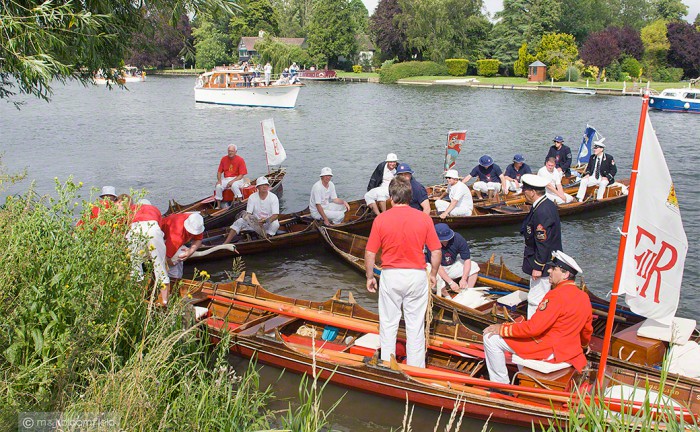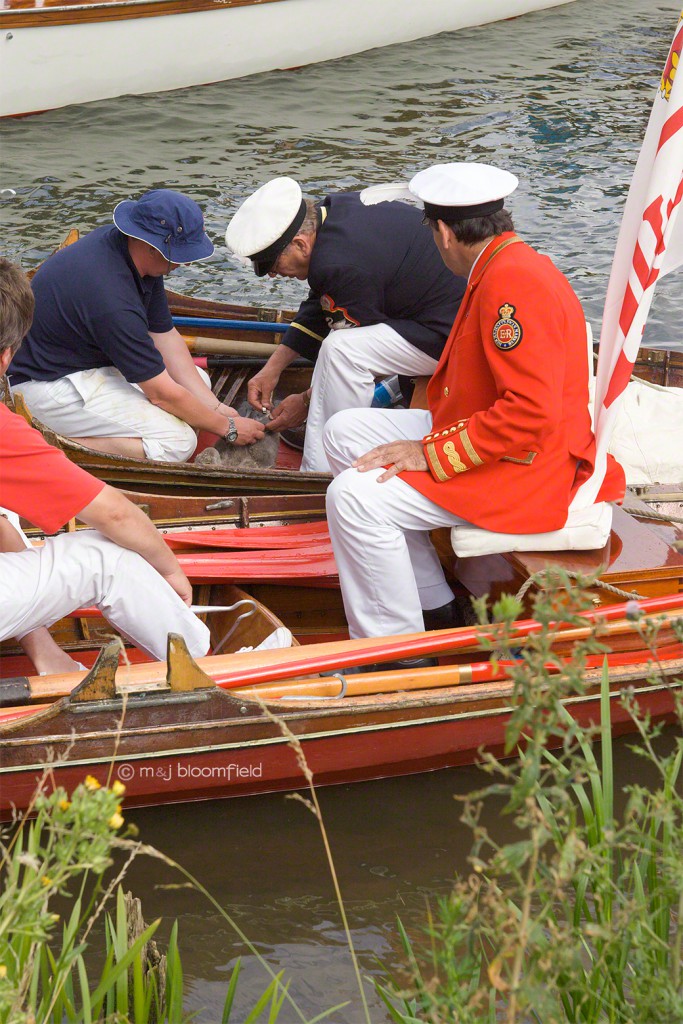
The third week of July will see the 800 year old tradition of Swan Upping continuing along the Thames from Sunbury to Abingdon. Its rituals and traditions arise from when the Crown laid claim to ownership of all mute swans found on open water. Although technically all mute swans are still owned by the Crown our present Queen exercises her right of ownership only on certain stretches of the Thames. This has led to the annual Swan Upping ceremony being held along its lower reaches.
For centuries ownership of swans was of great significance, the birds were seen as an important source of meat and quills for writing. In order to keep accurate records the post of Royal Swan Keeper was formed. It fell to the keeper to record swan numbers including the new cygnets hatched every year.
Although we can’t be certain why it happened, records show that in the 15th Century the Crown shared its ownership of swans with the Worshipful Company of Vintners and the Worshipful Company of Dyers, the sharing arrangement remains to this day. Royal swan uppers conduct the count of swans on the Thames and swan uppers from the two Worshipful companies accompany them to make sure that the marking of cygnets is carried out fairly.
This long tradition of ownership and marking forms the swan upping ceremony we see today. Starting at Sunbury Lock, Surrey, normally in the third week of July on a Monday the flotilla of six traditional Thames rowing skiffs proceeds up river to Abingdon in Oxfordshire. Two of the skiffs contain the Queen’s Swan Mark and the Royal Swan Uppers. While the markers and Swan Uppers of the Vintners’ and Dyers’ Worshipful Livery Companies man the other four skiffs. Today, this flotilla is accompanied by powered vintage river craft and makes quite a sight as it makes it way up river.
As the skiffs proceed up river, they are on the look out for cygnets, which will be about three to four weeks old at this time of year. As soon as a cygnet is spotted, a shout goes up from the swan uppers. Then with great skill they manoeuvre their skiffs around the cygnets and adults, gently pushing them towards the nearest bank.
Once close enough to the bank the cygnets are gathered into the boat by the swan uppers. Once aboard the birds legs are gently tied together to prevent the bird struggling and damaging itself. If the bank conditions permit, the birds are transferred to the bank to carry out the next part of the operation.
In times gone past the cygnets would have been marked by nicking the beak to show ownership. Today however, this has all changed, along with the reasons for the census and marking. Today’s swan upping is all about swan conservation. Swans, caught today are ringed weighed and measured and examined for any signs of injury.
The Queen’s Swan Warden carries out this work. This is a scientific role and not a ceremonial one
The Queen’s Swan Marker records the week’s activities in an annual report. The report details the numbers of swans, broods and cygnets counted by the Swan Upping. These reports provide an invaluable resource in the management and conservation of the swans along the Thames.

Comments RSS Feed